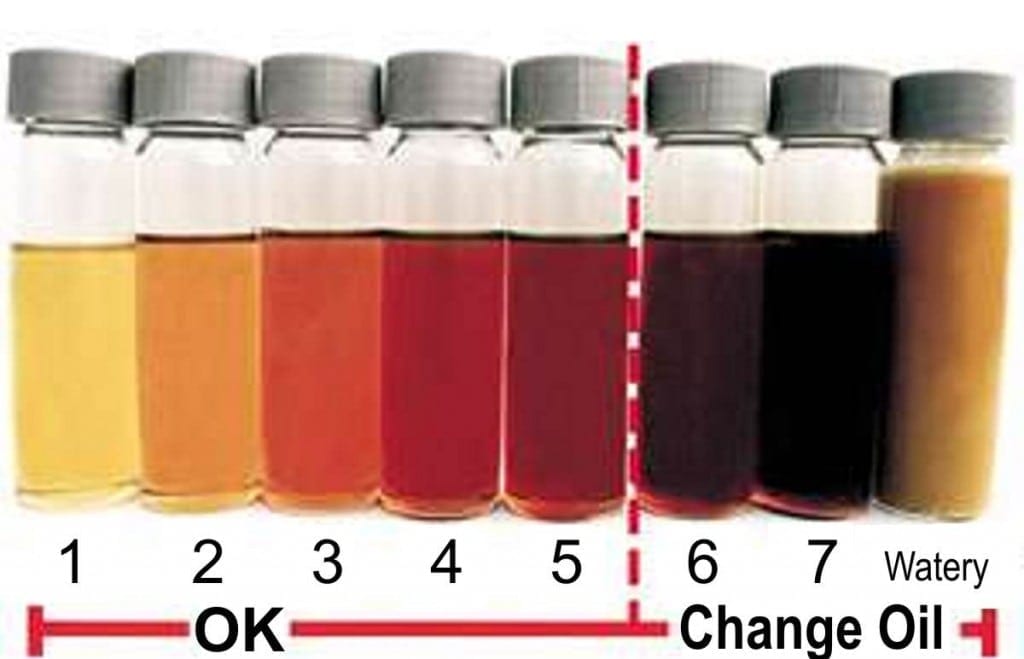Did you know that your engine oil changes color? Yup, and it also tells you a lot about your engine’s overall condition. Before we dive into this, it’s important to understand that while the different colors are typically indicative of different things, these shades shouldn’t be considered the law of the land. For example, engine oil is typically amber in color. But, depending on the type of oil, some additives might cause it to darken quickly. Therefore, a darker hue might not indicate a problem. However, you always want to use common sense when it comes to your engine. If it’s been nine months since you changed your oil, that dark color probably means it’s getting dirty and needs a change. Not to mention, if you change oil brands constantly, then all bets are off. Weather is able to impact the oil color as well. So it will never be an exact science, but color shifts are, at least, good indicators.
New Oil Color – General Rule of Thumb
I guess it’s appropriate to discuss the color of new oil before we get started.
As a general rule of thumb, new, clean oil is amber in color. It should also be clear when you pull out the dipstick.
Milky or Cream-Colored Oil
If the oil is milky or creamy colored, it could be indicative of a head gasket leak. Another good way to pick up on this, is if your exhaust is blowing white smoke and the vehicle is losing coolant.
Frothy and cream-colored oil could reveal water contamination. If you’re not seeing white smoke and low coolant levels in your vehicle, then water contamination is the next culprit.
Dark Oil
Dark oil can mean multiple things as well. It could simply just be darkened because of the additives. Or, the darker shade could result if the oil has also been cycled through too many times, and it’s time for a change.
If the oil is thick and dark, it could indicate dirt or contaminants, especially if it’s an off-road rig. Furthermore, it could also indicate that it has been experiencing high heat. Typically, that’s coupled with a burning smell when you take a whiff of the sample on the dip stick.
Dark brown is okay, and typically just a result of time. Black is cause for more concern and deeper investigation.
All You Need to Do is Check, Frequently
What’s the best way to figure out if there is something funky going on with your oil? Check it frequently. You don’t need a mechanic to tell you that something is up. If you’re curious (or paranoid about your vehicle’s health) check every few days and make a mental note of the color. At some point, you’ll learn to “read” your engine oil by color. For example, one brand might start to get dark around 3,000 miles, whereas another brand of engine oil starts to get dark by 5,000 miles.
Just look for the obvious color changes, and don’t stress too much about it. If you’re unsure, you can always consult a mechanic.



